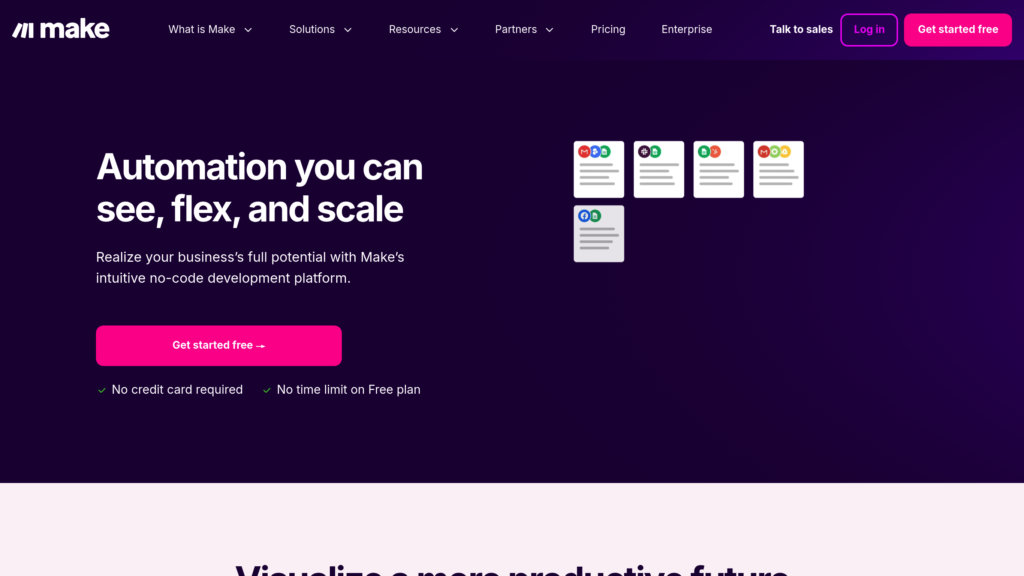Introduction
Make is a robust no-code automation solution that enables individuals and companies to visually construct intricate workflows without any programming expertise. It seamlessly connects with a vast ecosystem of over 1,000 applications and services, allowing users to automate routine tasks, streamline operations, and significantly increase productivity. The platform boasts an intuitive drag-and-drop scenario designer, sophisticated data transformation capabilities, webhook management, and live execution tracking. Furthermore, Make incorporates AI functionalities, role-based permissions, and enterprise-level security protocols, positioning it as an ideal choice for businesses of any scale aiming to drive digital transformation through automation.
Key Features
Visual Workflow Designer: User-friendly drag-and-drop interface for building and automating multi-app workflows without coding.
Vast App Ecosystem: Offers connectivity to more than 1,000 pre-built integrations, including Google Workspace, Slack, Shopify, and various CRM platforms for diverse automation possibilities.
Sophisticated Data Management: Equipped with robust tools for conditional data filtering, transformation, and routing to ensure precise and customized automation.
AI-Enhanced Capabilities: Features an integrated AI helper and modules such as ChatGPT connectivity to facilitate smart automation and tailor workflows.
Enterprise Security & Controls: Adheres to GDPR and SOC2 standards, provides role-based access, single sign-on, and comprehensive analytics for secure, scalable implementation.
Live Operations Dashboard: A monitoring console and analytics offer transparent insights into workflow performance and status for continuous improvement.
Use Cases
Sales Process Streamlining: Enhance CRM operations, automate lead nurturing, and produce sales analytics by linking platforms like Salesforce or HubSpot with other applications.
Marketing Workflow Automation: Automate prospect intake, audience segmentation, and email outreach by connecting marketing tools such as HubSpot and Typeform.
Customer Service Centralization: Automate ticket handling and customer messaging by integrating support systems like Zendesk, WhatsApp, and Slack.
Financial Operations: Automate the creation of invoices, payment matching, and financial consolidation by syncing payment processors like Stripe with accounting software such as QuickBooks.
Inventory Control: Facilitate live inventory monitoring and synchronization by connecting e-commerce systems like Shopify with spreadsheets or databases.
Team Coordination: Automate notifications and status updates across communication channels like Slack and email to ensure team alignment and efficiency.
